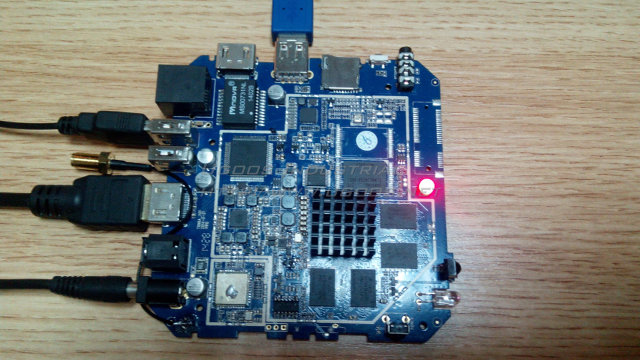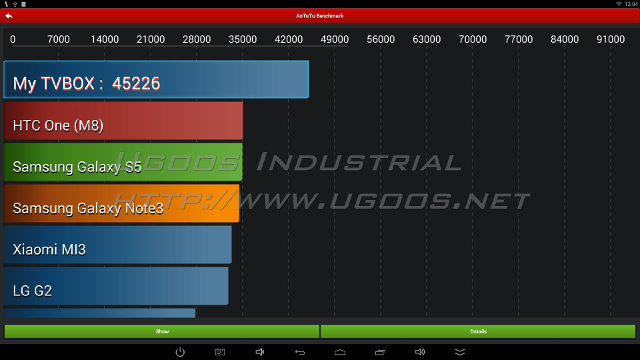There are many upcoming Rockchip RK3288 based devices, and in the listing the CPU frequency varies from 1.6 GHz to 2.0 Ghz. so it’s difficult to know exactly what to expect. Ugoos has done some testing with their UT3 board measuring temperature after Antutu benchmark for different CPU clock frequencies and fan/fanless combinations.
 The board comes with a rather tiny heatsink which may explain some of the results below. They also added a small fan on top in about half the tests to compare the temperature against an heatsink only solution.
The board comes with a rather tiny heatsink which may explain some of the results below. They also added a small fan on top in about half the tests to compare the temperature against an heatsink only solution.
Without further delays let’s go through the results:
| Frequency | Antutu Score | Temperature (heatsink) | Temperature (Back of PCB) | ||
| Heatsink only | Heatsink + fan | Heatsink only | Heatsink + fan | ||
| 1.608 GHz | 38655 | 67 °C | N/A | 70 °C | N/A |
| 1.704 GHz | 39853 | 72 °C | 50 °C | 75 °C | 60 °C |
| 1.800 GHz | 41440 | 83 °C | 52 °C | 85 °C | 62 °C |
| 1.920 GHz | 43397 | 86 °C | 53 °C | 89 °C | 64 °C |
| 2.016 GHz | 45226 | N/A | 55 °C | N/A | 67 °C |
So while it’s correct to say Rockchip RK3288 can reach 45,000+ points in Antutu (resolution: 1920×1080), there likely won’t be any fanless solutions that will be clocked at 2 GHz and achieve that type of performance. From this test, it even looks like the new Rockchip TV boxes are likely to be clocked at 1.6 GHz, unless other companies select larger heatsinks. 38000 points is still a very respectable score in Antutu.

There are some products is the wild right now, notably with Nagrace HPH RK3288, and one user reports an Antutu score of “only” 31.328 points, but considers the firmware very fast, and with good XBMC support, but it currently lacks Google Play support, and one of the launcher is in Chinese only, so it’s not quite ready for prime time. If you want one, a group buying is organized via Freaktab for $180 including shipping, This is a version with 4GB RAM, 32GB Flash and HDMI In.

Jean-Luc started CNX Software in 2010 as a part-time endeavor, before quitting his job as a software engineering manager, and starting to write daily news, and reviews full time later in 2011.
Support CNX Software! Donate via cryptocurrencies, become a Patron on Patreon, or purchase goods on Amazon or Aliexpress




